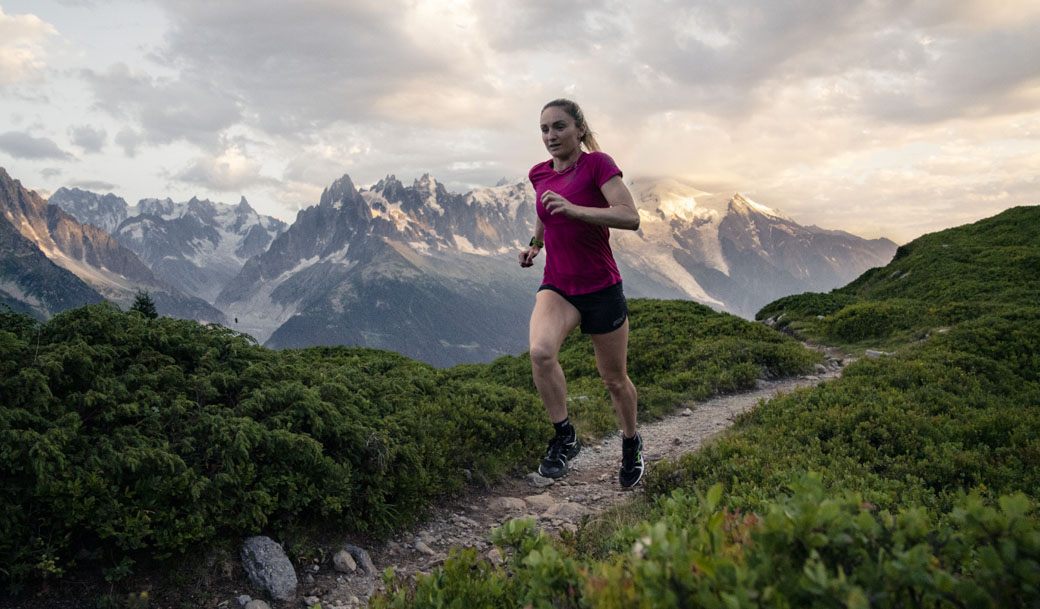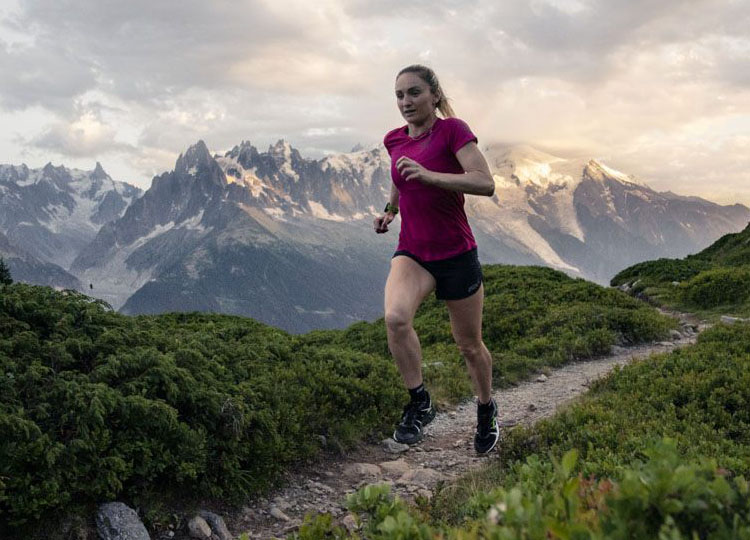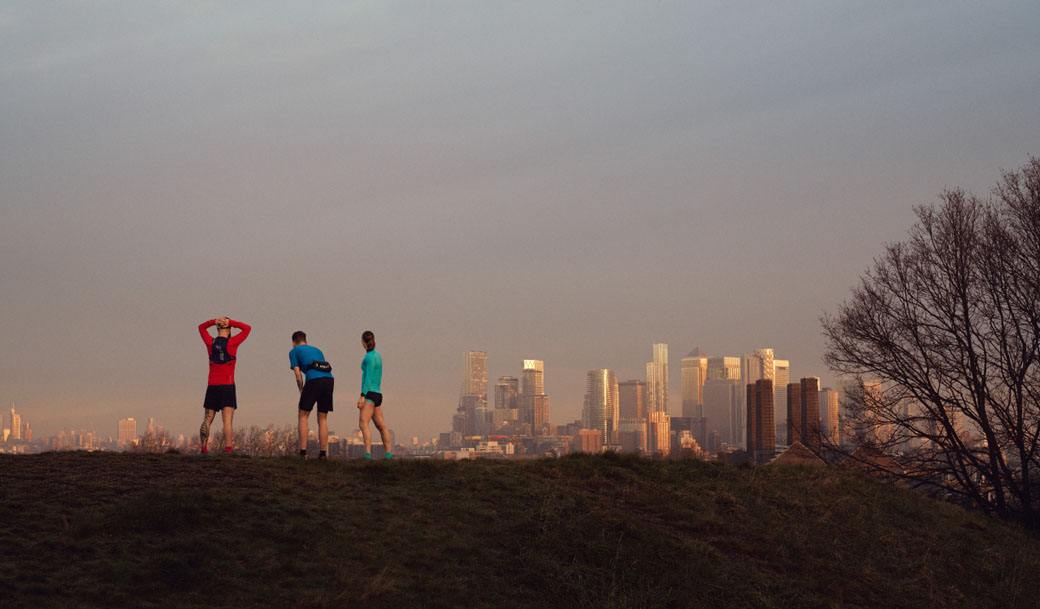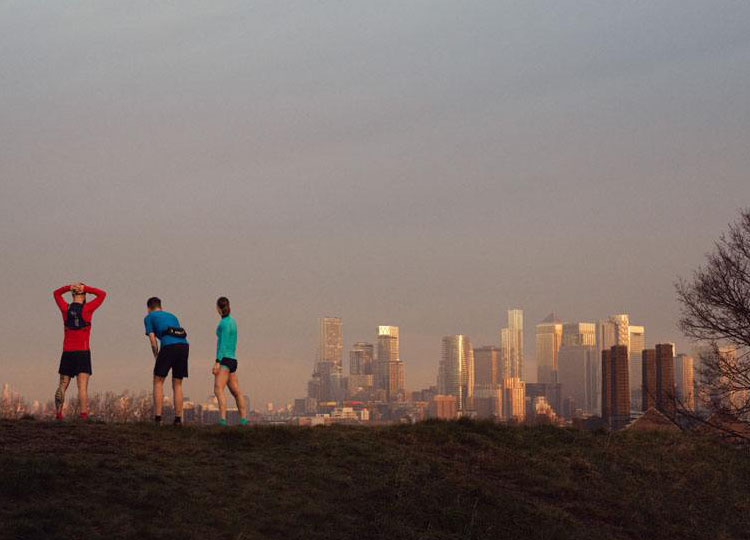
Are you new to trail running and wanting beginner’s advice? Are you transitioning from road running to off-road trails and want to know the key differences? Are you enjoying running in your local park and want to get more adventurous out on some trails? If you answer yes to any of these, you’ve found the right page!
With two decades of experience in trail running – covering all levels, terrains and gradients – we know our stuff. And yes, we all started as beginners too! To further help with this guide we’ve enlisted the help of INOV8 ambassador, Great Britain international ultra-trail runner, and health & lifestyle coach Meryl Cooper.
These are our 10 top tips, accompanied by expert insights from Meryl, for trail running beginners


10 TOP TIPS FOR TRAIL RUNNING BEGINNERS
1. BUILD UP SLOWLY
It sounds obvious but start slowly and don’t be over-ambitious at first. Sure, we sometimes hear about people who have taken up trail running and within six months have won a 100-mile ultramarathon trail race. Unfortunately, not everyone is superhuman. For most of us it’s a case of building up slowly.
Start with steady, manageable runs of 3km, 5km and 10k. Then, if things are going well and progression is being felt, build up your speed and/or distance. If you set your targets too high too soon, you risk setting yourself up to fail, or to get injured.
Meryl says: “When you start to run on trails you will discover that it takes longer to complete a distance than it does on roads because of the terrain and hills. Switch up your focus and run for time rather than distance.”
2. LEARN THE TERRAIN
Running on trails is very different to running on roads. It’s important you take the time to learn about the different types of terrain you’ll encounter and how it feels to run on them.
You can’t expect to run at the same pace – or the same cadence – over a trail scattered with rocks and tree roots as you would on the road. Get a feel for these terrains as you run over them, let your feet and shoes experience what’s underneath. Try to relax your body and think about being agile, so you can be ready to change your stride or alter your balance. The more you do this, the more your confidence will grow on trails.
Start with flat or gentle gradient trails, seeking out both hard ground and soft ground to get a feel for the differences underfoot. Landing your foot on a rocky hard trail versus a muddy soft trail is totally different and will see you adapt varying techniques. Some of these techniques will come naturally, some you will learn through practising.
Once your confidence has grown, look to introduce trails of increasingly steeper gradients. Running up and down steeper trails is often technically, physically mentally harder but, once mastered, is a whole lot of fun.
Meryl says: “Running on trails can be tiring at first. You have to concentrate, pick your feet up more and use some different muscles to what you are used to. The terrain might be muddy, hilly or have a few obstacles to dodge. All these things will slow you down and that is ok! Just make sure you don’t fall into the trap of comparing your speed on the trail versus your speed on the road. Have fun and enjoy a sense of play on the trails.”
3. LOOK AHEAD, NOT AT YOUR FEET
As more confidence grows, begin to look ahead on the trail, rather than at your feet. The sooner you can learn to do this, the better.
Perhaps start with two metres ahead, then increase the distance. The idea is that you can then see what type of terrain lies ahead, giving you time to think about where best to place your feet. It also allows you to spot any big rocks or other trails hazards up ahead.
If you’re simply focused on looking only at your feet, you are more likely to miss the rocks and hazards until you hit them. You’ll then be wishing you’d picked your head up earlier!
At the same time, trust your feet! When matched with a sharp-thinking brain, they can do amazing things.
4. IT’S OK TO WALK
All the top trail runners do it. There is absolutely no shame in walking, especially on uphill sections. Indeed, on longer runs, you are better to walk some of the bigger uphill trails and seek to conserve some energy for the flatter or downhill sections.
Meryl says: “Ideally, start to walk before you really need to and seek to find a sustainable effort (that might be a walk/run/walk/run mix). All the top trail runners walk up some hills – I guess it’s just not what we see on Instagram or magazine covers! As you build confidence and fitness on the trails, you will start to find hills easier and be able to run more of them.”
5. JOIN A CLUB
Draw on the wealth of knowledge of the local people and local runners within a running club. It’s a good way to find running partners and training buddies too. You’ll find out the best trails to run on and routes to take.
While it might feel intimidating at first, remember that most trail running clubs will have groups of varying ability and experience levels. Once you get over the first session nerves, you’ll likely never look back.
6. MAPPY TRAIL RUNNING
Buy a map of the local area and study the network of trails near to your home. You will find this is a lot of fun and allows you to plan your routes in advance. Running apps like Strava also show you maps of popular running trails, which you can then link up. Better still, follow fellow runners on Strava and take inspiration from their choice of trail routes.
Grow confident on a route and, if you want, see if you can start to run it a little quicker. Then switch direction, run it the opposite way and see which you prefer. Trail running is fun, especially when you open your mind to exploring different trails. Go try it!
7. THINK OF THE HEALTH BENEFITS
Countless studies have shown the enormous health benefits – the biophilia effect – of being in green places. The road or the trees? Traffic or toadstools? It’s a no-brainer.
Sure, the path may look a bit muddy and rutted, but you’ll get core strength benefits from trails to go with the mental gains, whereas you’re more likely to get injuries from repetitive pounding of pavements.
Meryl says: “Trail running engages all the senses and gives you a feeling of freedom that is very different to road running. I have had some of my most creative ideas whilst running on the trails due to the relaxing nature of it and the almost meditative state you can find yourself in once you get into the run.”


8. GO EASY ON THE DOWNHILLS AT FIRST
Delayed onset muscle soreness (DOMS) can be painful. It’s when your quads howl at you a day or two after a hilly trail run. It can leave you walking rather stiff-legged and make scaling stairs incredibly difficult!
It happens because your leg muscles aren’t used to the hills, especially the downhills, and they get a bit of a shock. So just go easy on the downhills at first, or you might regret it. Downhill running does get easier as your legs learn to accept them, we promise.
9. SHOES THE RIGHT KIT
Wearing trail running shoes is important for trail running. During a trail run or race, the terrain can change underfoot, so the most important thing is choosing a shoe that best matches that terrain and gives you the best possible grip, comfort and protection.
Forget flat-soled, road-specific shoes and get something with more aggressive, longer studs on the outsole that will dig into the trail to give you confidence-boosting grip.
The perfect shoe for beginner trail runners is the PARKCLAW G 280. This is designed as a road-to-trail shoe, meaning it is built to take you from your door, over the roads and onto the trails. It has 4mm long rubber studs aligned carefully to offer fantastic grip on piercing all types of trails and, at the same time, run smooth on roads.
Meryl says: “Trail running shoes have things like grippy soles, toe bumpers and rock plates, which will help you to run safely and comfortably on uneven terrain. Some other key beginner kit I would recommend would be a running pack that sits snug on your body for longer runs (not one that bounces around) and allows you to carry water, food and extra gear, as well as socks that prevent blisters and a lightweight waterproof jacket.”
10. ENTER SOME TRAIL RUNNING RACES
Find some good, friendly trail running races to enter. This will help to give you a focus for the year and help you meet more fellow trail runners. Many events are set up to cater for all abilities and often the routes will take you into stunning countryside. One of our favourite trail running series is Lakeland Trails, which offers distances from 5k upwards, allowing you to progress as the year goes on. Their events are set in and around the English Lake District, where we were founded in 2003 and remain based.
Meryl says: “If you want to improve your trail running then booking a race will help you to commit to getting to the trails each week. The training runs will help you get used to the kit for race day and give you a chance to practise fuelling and hydrating whilst running on uneven terrain. If you build the good habits in training, they will be easy to do on race day!”
